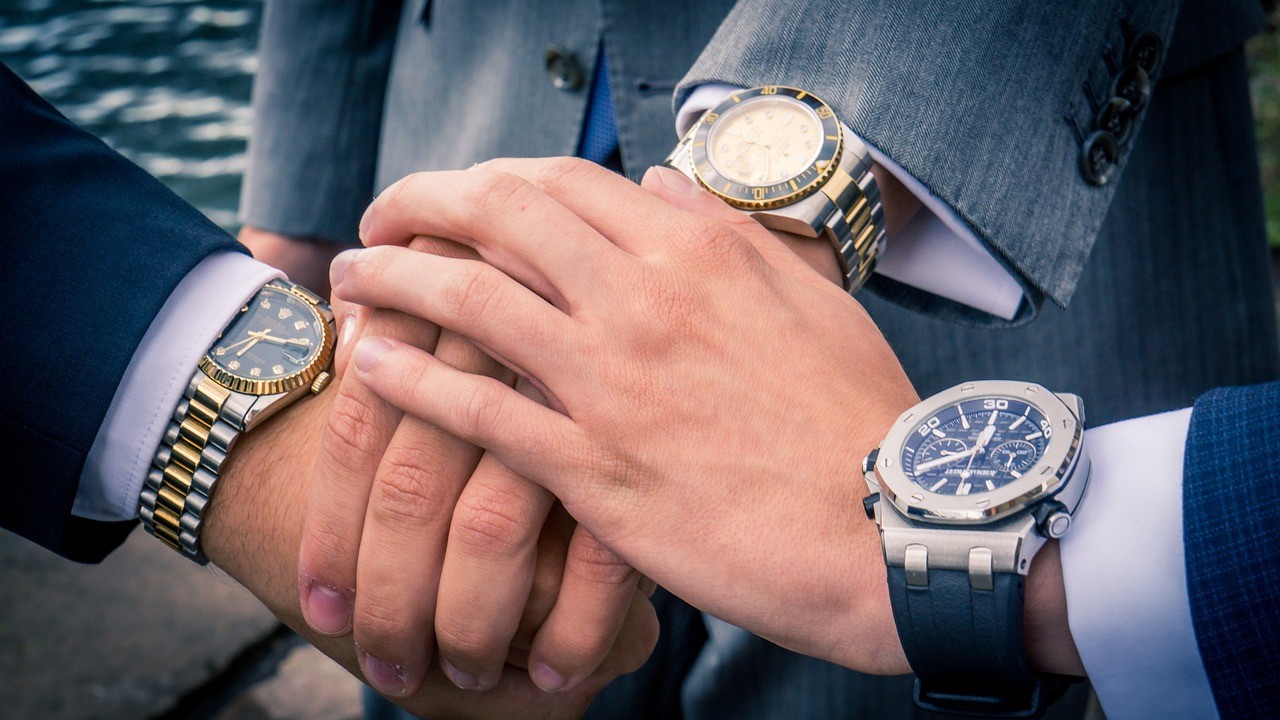Hey there, fellow middle-aged gentlemen! Grab a comfortable chair, pour yourself a glass of your favorite whiskey, and let’s have a chat about a topic that’s near and dear to many of our hearts: designer watches. Specifically, we’re going to delve into the idea of whether some of these exquisite timepieces can be considered non-depreciating assets, or in simpler terms, whether they can be a smart investment choice.
Now, before we dive headlong into the world of horology and finance, let’s take a moment to appreciate the timeless allure of a well-crafted watch. There’s something undeniably captivating about the intricate mechanisms, the gleaming dials, and the fine craftsmanship that goes into creating these wrist-bound works of art. It’s a passion that many of us have nurtured over the years, and it’s one that often leads us to contemplate whether our cherished timepieces can serve not only as functional accessories but also as financial assets.
First things first, though. Not all designer watches are created equal when it comes to holding or appreciating in value. So, let’s break down some key factors that determine whether a watch can be considered a non-depreciating asset.
1. The Brand and Model: The Luxury Ladder
Now, if you’re going to venture into the world of watch investments, you’ve got to start at the top of the luxury ladder. Brands like Rolex, Patek Philippe, Audemars Piguet, and the like are where it’s at. These names aren’t just brands; they’re legends in the world of horology. Owning one of their watches is like owning a piece of history and craftsmanship that transcends time.
But why are these brands so highly regarded in the world of investments? It’s partly because they’ve been around for decades, even centuries, and have built a reputation for producing exquisite timepieces that are not just watches but symbols of status and prestige. Owning a Rolex, for example, isn’t just about telling the time; it’s about making a statement.
When you invest in a luxury watch from one of these brands, you’re not just buying a timekeeping device; you’re buying a piece of art. And, as with any art investment, the value of your purchase can appreciate over time, especially if it’s a limited edition or iconic model.
2. Condition Matters: The Time Capsule Effect
Imagine stumbling upon a vintage Ferrari in pristine condition that’s been tucked away in a garage for decades. The same principle applies to watches. The condition of the watch plays a massive role in its potential to retain or appreciate in value.
Think about it; nobody wants to invest in a scratched, dented, or tarnished piece of horological history. It’s like buying a classic car with a rusted chassis; the appeal simply isn’t the same. So, if you’re serious about watches as investments, keep them in tip-top shape. Regular servicing, careful handling, and keeping them in their original boxes can make a world of difference.
3. Rarity: The Quest for Uniqueness
One of the fundamental principles of investing is supply and demand. The rarer an item, the more valuable it tends to be. This principle holds true in the world of watches as well. Limited production runs, discontinued models, and rare complications can send the value of a watch skyrocketing.
Imagine owning a watch that only a handful of people in the world have. It’s like having a rare vintage wine in your collection. Watch collectors are often drawn to these unique timepieces, and they’re willing to pay a premium for them.
4. Historical Significance: Time Keeps Memories
Some watches have a history that goes beyond telling time. They have been part of historical moments, worn by famous personalities, or have a fascinating backstory. These watches can become collectors’ items and hold or appreciate in value due to their historical significance.
For example, the Omega Speedmaster became famous as the “Moonwatch” because it was worn by astronauts during NASA’s Apollo missions. The historical connection to space exploration adds a layer of value and intrigue to this watch that goes beyond its mechanical precision.
5. Original Packaging and Documentation: The Paper Trail
Imagine buying a vintage car and receiving a folder filled with its original manuals, service records, and even the sales receipt from the day it was purchased. Having this paper trail not only adds to the authenticity of the item but also can significantly increase its value.
The same holds true for watches. If you have the original box, papers, and documentation that came with your watch, it can add considerable value. It proves the watch’s authenticity and ownership history, making it more desirable to collectors.
6. Market Trends: Riding the Wave
Now, as much as we’d like to think of watches as timeless investments (pun intended), the reality is that market trends can have a substantial impact on a watch’s value. What’s considered desirable can change over time.
For instance, there might be periods when vintage watches are all the rage, and then suddenly, the market shifts its focus to contemporary pieces. Being aware of these trends and market dynamics is crucial for making informed investment choices.
7. Maintenance and Servicing: Preserve and Protect
Let’s talk about maintenance for a moment. Just like a classic car needs regular maintenance to keep it running smoothly, watches require servicing to ensure they remain in excellent condition. Having your watch serviced by authorized dealers or expert watchmakers not only keeps it ticking accurately but also preserves its value.
A well-maintained watch can fetch a higher price when it’s time to sell or trade. Neglecting maintenance can lead to issues like reduced accuracy, wear and tear, and even damage that can significantly decrease its value.
Now, you might be wondering, “Is investing in watches the right choice for me?” Well, my fellow middle-aged gentlemen, that’s a question only you can answer. Investing in watches can be a passion-driven endeavor as much as a financial one.
If you have a genuine love for horology, an appreciation for craftsmanship, and an understanding of the watch market, then it might be a worthwhile venture. However, it’s crucial to approach it with caution and not solely for the promise of financial gain.
Remember, like any investment, there are risks involved. The watch market can be unpredictable, and there are no guarantees that a watch will appreciate in value. It’s possible to make money, but it’s also possible to incur losses. So, if you’re considering watches as investments, do your research, seek advice from experts, and be prepared for the long haul.
In conclusion, my fellow middle-aged men, designer watches can indeed be non-depreciating assets if you choose wisely, take care of them, and stay informed about the ever-evolving world of horology. Whether you’re drawn to the timeless elegance of a Rolex Submariner, the iconic beauty of a Patek Philippe Calatrava, or the innovative engineering of an Audemars Piguet Royal Oak, remember that these timepieces are not just investments; they’re a reflection of your style, your passion, and your appreciation for the finer things in life.
So, go ahead, wear that designer watch with pride, and maybe, just maybe, it’ll also become a smart investment that will stand the test of time. Cheers to the beauty of horology and the thrill of the hunt for



Comments are closed